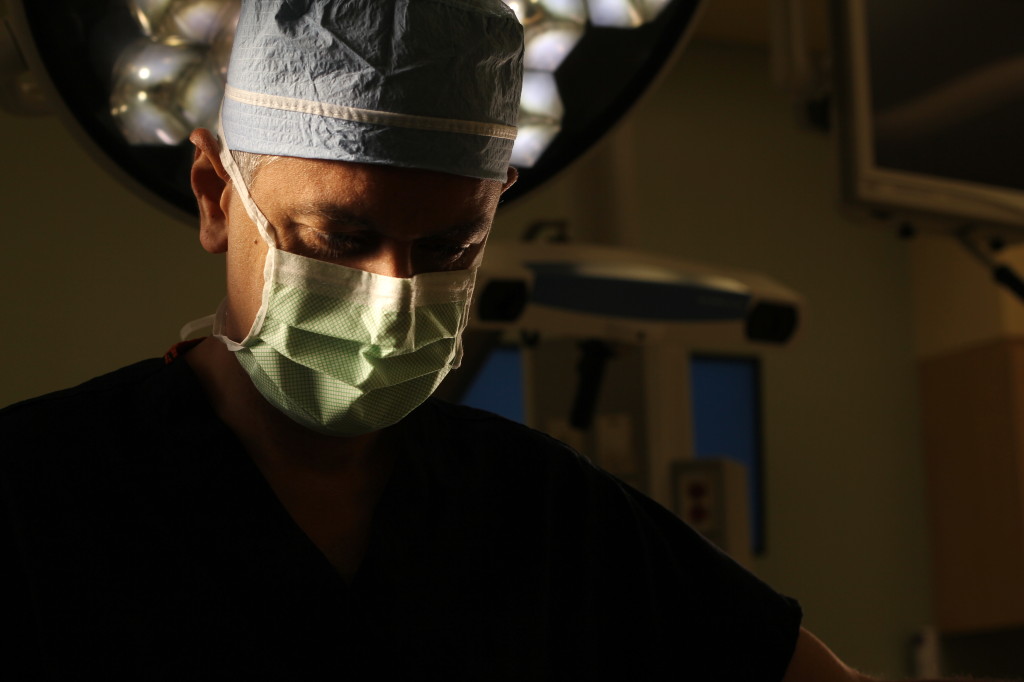 When healthy, spinal discs are comprised of approximately 80% water and serve as efficient shock absorbers to the forces we place on our back. As we age, however, discs begin to lose their water content and become less resistant to daily wear and tear. Once a spinal disc is injured, it cannot repair itself. Instead, the disc will continue to degenerate, causing a collapse of the interbody space, nerve irritation and compression, and overall instability within the spine that may manifest as a variety of painful or debilitating symptoms. Minimally invasive spine surgery is often the most effective treatment to limit these degenerative changes and provide lasting relief. To learn more about degenerative disc disease, including information about symptoms and treatment, please visit WebMD.
When healthy, spinal discs are comprised of approximately 80% water and serve as efficient shock absorbers to the forces we place on our back. As we age, however, discs begin to lose their water content and become less resistant to daily wear and tear. Once a spinal disc is injured, it cannot repair itself. Instead, the disc will continue to degenerate, causing a collapse of the interbody space, nerve irritation and compression, and overall instability within the spine that may manifest as a variety of painful or debilitating symptoms. Minimally invasive spine surgery is often the most effective treatment to limit these degenerative changes and provide lasting relief. To learn more about degenerative disc disease, including information about symptoms and treatment, please visit WebMD.
Todd Gravori, MD, Director of ProMedSPINE, and his team are board-certified neurosurgeons specializing in orthopedic and neurological spine surgery. At ProMedSPINE, we take pride in offering the most sophisticated technology and cutting-edge minimally invasive spine procedure to provide the highest quality of care for our patients, including those with herniated discs. To learn more about our comprehensive treatment approach to degenerative disc disease or to schedule an initial consultation, please call 888-75-SPINE.
Osteoarthritis of the Spine
Also known as osteoarthritis of the spine, degenerative disc disease can occur at any age, but symptoms typically present in otherwise healthy individuals in their 30s or 40s. Common signs of disc degeneration include:
- Pain that is worse when sitting, bending, lifting, or twisting
- Periods of nagging or severe pain that seem to come and go
- Feeling better when changing positions or lying down
- Numbness and tingling in the extremities, including arms, hands, and legs
- Weakness in the leg muscles and/or foot drop
Our expert surgeons take their time with each patient to evaluate the symptoms and circumstances of their pain. X-ray and/or MRI scans of the spine are necessary to confirm a diagnosis of degenerative disc disease and evaluate potential treatment options. While there are always some abnormalities seen on MRI with age, only the precise and correct identification of the cause of symptoms can lead to an effective treatment.
Non Surgical Treatment Options
Early use of non-operative therapies has the potential to curb disease progression and improve many of the symptoms associated with disc degeneration. Conservative treatments typically recommended by our team include:
- Physical therapy/Exercise to stretch the back and strengthen the core
- Epidural Steroid Injections to relieve inflammation at site of a degenerative disc
- Medications, including muscle relaxants and non-steroidal anti-inflammatory drugs
When conservative treatments fail to provide adequate relief, patients are faced with several surgical alternatives. The goal of surgery is to restore stability to the spine, with the hope of limiting future degenerative changes and alleviating the painful symptoms that follow. Thanks to recent advances in surgical technique and technologies, such as the artificial disc, surgery can be a very effective long-term solution for degenerative disc disease when performed on a proper candidate.
As a leading experts in minimally invasive spine surgery, our team is highly experienced and skilled in procedures that are still largely unavailable at other medical centers in Los Angeles and even around the country.
Most of our surgeries are done as out-patients and done through a very small cosmetic incision. The majority of our patients ambulate right after the anesthesia wears off and are able to go home in a couple of hours.
Our patients’ surgical options may include:
- Disc Replacement: a relatively new, cutting-edge procedure in which an artificial disc is inserted into the spine to replace the degenerated disc; the artificial replacement is designed to mimic a natural spinal disc, restoring stability and preserving flexibility in the spine.
- Minimally Invasive Spinal Fusion: a surgical procedure in which a bone graft is inserted in place of the damaged disc(s) and the adjacent vertebrae are permanently joined; instrumentation (screws, metal rod) are then used to stabilize the spine to help prevent further degeneration.
- Percutaneous Discectomy: a laser spine procedure that involves removing a portion of a disc that has protruded into the spinal canal and is causing irritation or compression of spinal nerves
Contact an Encino Spine Surgeon
ProMedSPINE is a Los Angeles-based practice dedicated to state-of-the-art, comprehensive, individualize care for diseases and conditions of the spine. Led by renowned neurosurgeon and leading expert in minimally invasive spine surgery, Todd Gravori, MD, we offer the most advanced and effective treatment options available to relieve chronic pain associated with spinal degeneration or injury.
To learn more about degenerative disc disease or to schedule an initial consultation with Dr. Gravori, please call 888-75-SPINE or fill out our online contact form.
Next, read about cervical disc hernias (disc bulges).
